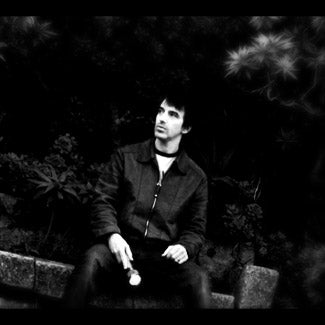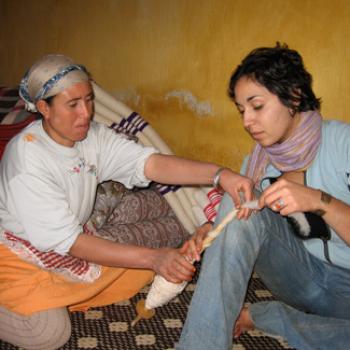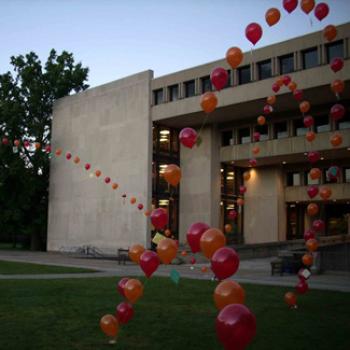On working at Pixar and Dreamworks Animation
Reid Gershbein ’93
“None of these events would have happened to me if it hadn’t been for Oberlin’s amazingly nurturing environment, fantastic camaraderie, and the best mentor a student could have.”

There are exactly 432 things that have happened to me since I graduated from Oberlin in 1993, but I’ll only talk about six of them here: Princeton, Stanford, Pixar, a startup you’ve never heard of, Dreamworks Animation, and personal art. None of these events would have happened to me if it hadn’t been for Oberlin’s amazingly nurturing environment, fantastic camaraderie, and the best mentor a student could have: Bob Geitz of the Computer Science Department.
I graduated with a Computer Science degree and focused on computer graphics. Straight away, I entered the Computer Science PhD program at Princeton University. Within a few months at Princeton, I had done some work that ended up in a publication in the field called SIGGRAPH. My adviser, Pat Hanrahan, talked to Ed Catmull, who saw my work and asked if I’d like to work at the company he had started. Ed’s company, Pixar Animation Studios, was working on the world’s first all Computer Graphics (CG) film called “Toy Story".
Fortunately, my advisor had been offered a position as a full professor at Stanford University, in the Bay Area. He took the position and I went with him. This allowed me to continue to work on my PhD at Stanford while simultaneously working at Pixar, which was also in the Bay Area, doing research and development.
During the making of “Toy Story,” I asked Ed what the most difficult and unforeseen issues were in making the first CG feature film. He said that lighting (the process of moving and placing lights in the scenes) was by far the biggest production bottleneck. This topic overlapped well with the areas I had been working on and I decided to focus on cinematic lighting of computer-generated films for my PhD thesis and work research.
After splitting my time between Stanford and Pixar for a few years, I took some time off from Stanford and became a technical director at Pixar where I did lighting on the films “A Bug’s Life” and “Toy Story 2.”
Once “Toy Story 2” wrapped, I went back to Stanford to finish writing my PhD dissertation, which was going to take about six months. A big dream of mine was to have my own film company and I thought it would take a while to raise money, so I decided to jump right into fundraising while finishing up my thesis. The problem with this strategy was that being a PhD student in Computer Science at Stanford, having a Pixar background, knowing a few really helpful friends in the PhD program who had started successful companies, and having a fairly compelling idea for a start-up meant that fundraising went faster than expected. Two weeks into the fundraising process, I had raised over a million dollars — I had to decide whether to take the money and start the company, or finish my PhD.
I still think sometimes it would be nice to have a PhD.
The animation company I started in 2000, called Thrave, was founded on three ideas. First, a new technology — Flash — and tools for 2D animation now allowed for high quality animation to be produced inexpensively. Second, Flash technology had low bandwidth requirements compared to live-action video compression, which allowed people to view high quality animated films online. This meant that we could show and distribute our films online rather than through traditional distribution channels. Finally, we thought that we could support online serialized shows and films through ads and sponsorship. While two out of three ain’t bad, sometimes you need three out of three to have a company succeed.
Thrave was able to produce high-quality animated episodes using Flash that allowed them to be viewed on the web. This was really successful: I met with a lot of big studios that were interested in adding our shows to their developing online lineups.
Unfortunately, in 2000-2001, companies and advertisers hadn’t really started to advertise on the web yet and it was really hard to try to convince them that they should. So we weren’t able to generate enough revenue to support the company; all of the traditional studios abandoned their online plans for the same reason.
I had a personal insight at Thrave — being an executive at a movie studio didn’t allow me the mental time or space to work on my own creative projects or my main passion: writing and directing my own feature films. So I went to Dreamworks Animation doing research and development, and now, in my free time, I work on my own films pursued purely for personal artistic expression rather than for money.
Over the last seven and a half years, I’ve worked on many big-budget animated movies at Dreamworks Animation: “Shrek 2,” “Madagascar,” “Over the Hedge,” “Bee Movie,” “Shrek the Third,” “Kung Fu Panda,” Madagascar 2,” “Monster Vs. Aliens,” “How to Train Your Dragon,” and “Shrek Forever After.” I’ve also written and directed three live-action feature films: “Broken Arrows,” “Here. My Explosion...,” and “The Dabbler, the Dreamer, and the Man Who Broke the World.” I’m also working on several more personal feature films, including “Flowers,” which is being shot as I write this (May 2010).
For more information, you can reach me at @thraveboy on Twitter.
Tags:
You may also like

On her new rug-importing venture, Kantara Crafts
“I have just returned from Morocco with my first batch of rugs and the excitement is palpable; what started with my desire to make a difference on a local level two years ago has now turned into a...
Alia Kate ’08

On the genesis of a company
“[My roommate] had a crazy idea: working for yourself and starting a company is way more creative and fulfilling than working at a preexisting company, and here we are six months after graduation [...
George Saines ’08

On entrepreneurship
“The flexibility and desire to allow students to do what they believe is best for them has paid off in more ways than I can count and led to lifelong entrepreneur endeavors.”
R. Jon MacDonald ’03